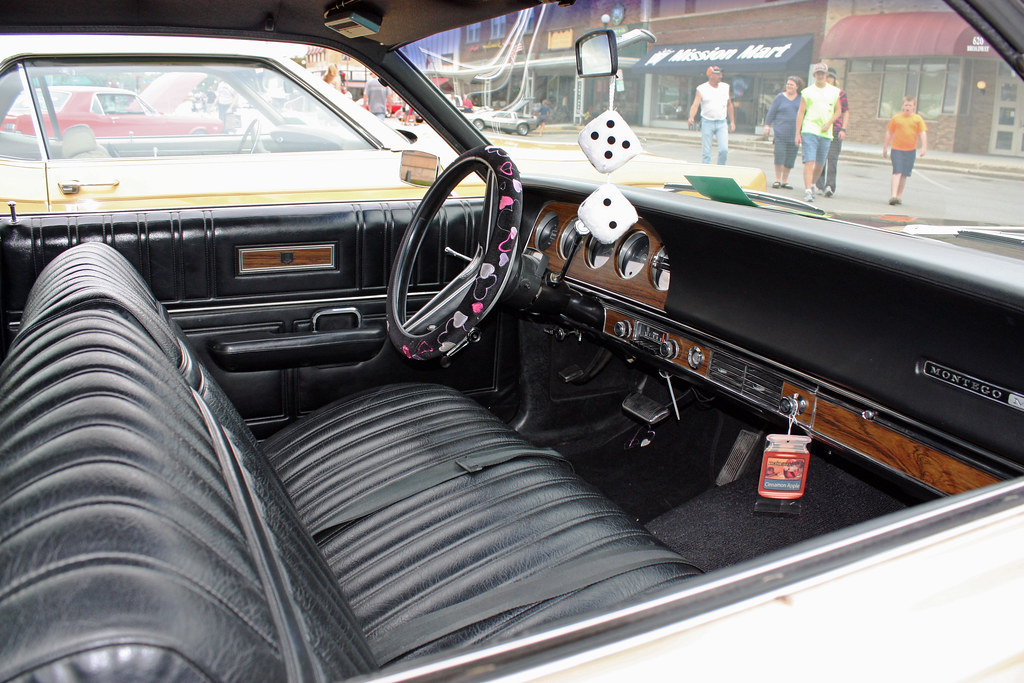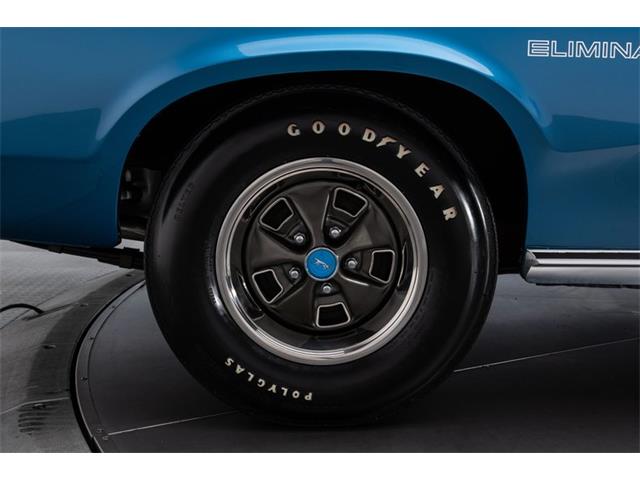The late-1960s was a pretty good time to be a member of the human race. Nothing seemed too difficult or beyond our capabilities. We put men on the moon, proving that the sky wasn’t the limit after all; supersonic flight became possible with Concorde and that staple of international air travel, the Boeing 747, also hit the skies.

But it wasn’t just the technical engineering stuff. Musical creativity levels, for example, were almost as high as the artists themselves. Jimi Hendrix rewrote the guitar rulebook and The Rolling Stones, The Beatles, Pink Floyd, Led Zeppelin and more would shape the course of popular music for the next 40-odd years. Then there’s the first airing of Sesame Street – where would we all be without Sesame Street?
This collective optimism was reflected in US car purchasing decisions. The number of cars on American roads exploded during the post-war boom and by the ’60s having a car as a status symbol was no longer enough – it was what you drove that mattered. This created opportunities for US entry-level luxury brands such as Mercury, Pontiac and Oldsmobile to snag buyers looking to move their way up the
automotive hierarchy.

“They were essentially a rich man’s sports car,” says Angelo Ferraro of his Mercury Montego MX. “Everyone went for the Mustangs; the older guys went for these big things.” Ferraro’s words are backed up by Mercury’s literature of the time that played heavily on the Lincoln connection. In Ford’s eyes Mercurys were very much a ‘baby Lincoln’, sold through separate Lincoln-Mercury dealerships, rather than as an up-specced Ford.
The Montego was introduced in 1968 as a four-door sedan or two-door Hardtop, replacing the Capri as the second rung in Mercury’s mid-size range and slotting in above the entry-level Comet. The up-spec Montego MX replaced the Caliente and could also be had as a convertible or station wagon.

An MX Brougham headed the Montego line-up, though performance fans would likely have made a bee-line for the Cyclone, available as a two-door hardtop or fastback. All models bar the station wagon shared the 116-inch (2.95m) wheelbase and unitary construction of Ford’s Fairlane/Torino.
Prices at launch started at US$2504 for the Montego four-door sedan ($2552 for the hardtop), but tick a few boxes and it didn’t take long to breach $3000, still with the weedy 86kW (115bhp) 200ci six-cylinder under the bonnet.

Optional in 1968 were 302 and 390ci V8s, both in two states of tune ranging from the two-barrel, 9.0:1 compression 302 with 157kW (210bhp) to the four-barrel, 10:5.1 390 with 242kW (325bhp). A 351ci in 2V and 4V form was added in 1969, the 428ci Cobra Jet became available in everything bar the top-spec MX Brougham (as opposed to just the Cyclone) and the base engine became a 250ci 116kW (250bhp) six. A 351 4V sits nestled between the front strut towers of Ferraro’s Montego MX, attached to the optional three-speed Select-Shift auto.
In the super-sized US, the Montego may have ranked as a mid-sizer, but the exact same platform underpinned Ford Australia’s large car, the ZA-ZC Fairlane. Serial Ford man Ferraro confirms that anyone with experience of that series of Fairlane will find the Montego driving experience instantly familiar, “Oh yeah, I’ve had ZAs and when you’re driving it, it’s definitely the same feeling,” he says.

Ferraro’s ’69 Montego MX was imported by a close friend and was a one-owner car purchased from a deceased estate. It had little use over the next two years and, tired of seeing it in his mate’s garage, Ferraro bought it in early-2009.
That one American owner clearly wasn’t afraid to spend a bit extra to get their ideal Montego, as by the time it left the dealer the purchase price had blown out from the standard Montego MX’s $2719 (although that includes the 302ci V8, the 250ci six was an ‘option’ that saved $90) to over $3726.
Hitting the hip pocket hardest was the Whisper-Aire Conditioning at $375.70 – the equivalent of Ford charging about $5500 for a cooling breeze in a current Falcon G6! The potent 351ci 4V Windsor added $101.10, while three-speed auto ($200.85), power steering ($94.60) and power disc brakes ($64.80) helped harness the extra grunt. The rest is accounted for in luxuries like the AM radio ($60.90), tinted glass ($35.00) and front headrests ($17.00).
But dig a little deeper into the murky world of late-’60s FoMoCo pricing and things become as clear as mud. The closest comparable Ford to the Montego MX – the Fairlane 500 – started at $2609 in two-door hardtop form, but add $90 for the 302 V8 standard in the Mercury and the price differential between the two models closed to just $20.
But wait, there’s more, as Ford charged more for the same options in the Fairlane ($380.41 vs $375.70 for air-con, $36.86 vs $35.00 for tinted glass and so on) making a Mercury – with extra sound deadening and higher quality interior – look like a bargain.
So why weren’t buyers lining up around the block at Mercury dealerships? The Montego was reasonably successful, but never approached the sales numbers of the Fairlane, despite, as we’ve seen, the cars
being very similar in price.
US Ford expert John Rotella explains part of the problem: “The mid-size Mercurys of the ’60s were constantly being repositioned and reinvented – it must have been a nightmare for salesmen. Ford’s big marketing error was in 1966 when they should have dropped the Comet name altogether, and went straight to Montego. Maybe was planned that way so it would be deliberately difficult to compare prices/equipment, and rely heavily on the Mercury reputation as its strongest selling point.”
The range was repositioned again in 1970. The Comet name was dropped and the Montego became the base mid-sized Mercury, with the interior and exterior heavily based on the Ford Torino. The external restyle incorporated a massively protruding centre grille section that made the Montego a Barbara Streisand impersonator and the sporty Cyclone look like the victim of a failed rhinoplasty.
Worse was to come. The ‘72 Montego grew in size and switched from unitary construction to body-on-frame in the name of greater comfort and isolation from road conditions. The ‘rich man’s sports car’ was dead. Declining sales and a larger, more luxurious Cougar eventually lead to the Montego’s demise in 1976.
But let’s not end on a sour note. The 1968-69 Montego offered “Cougar excitement combined with full six-passenger comfort” according to the ’68 brochure and is today guaranteed to get people scratching their heads at your local cruise meet. “Yes, the first question most people ask at show is, ‘What is it?’” laughs Ferraro.





